This pineapple coconut water kefir is super refreshing, easy to make, and packed full of probiotics.
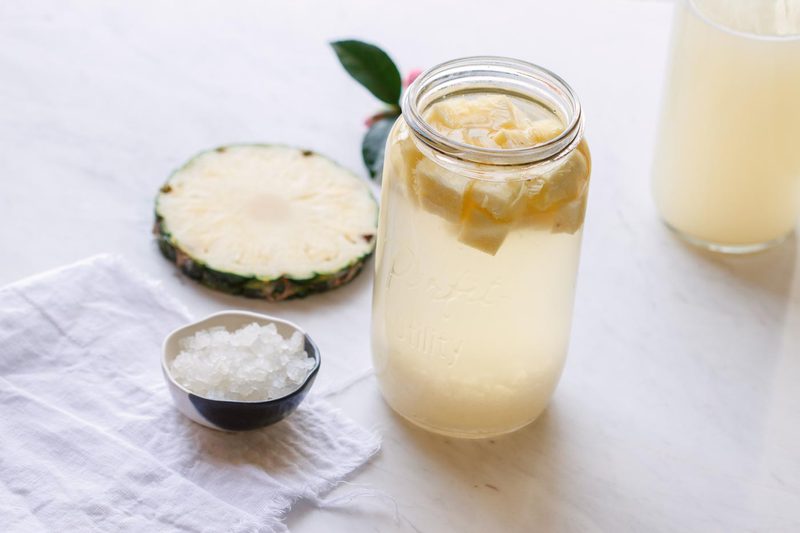
What is Kefir?
Kefir, like kombucha, is a fermented drink filled with probiotics, lightly fizzy and quite delicious.
Probiotics, meaning, ‘for life’, are non-pathogenic, beneficial bacteria that help to maintain the balance of the gut microflora. They can help prevent the overgrowth of harmful bacteria, and maintain the integrity of the intestinal mucosal barrier – helping prevent conditions such as leaky gut and inflammatory bowel disease. Beneficial bacteria species can also modulate the immune system and down regulate inflammatory cytokines, prevent diarrhea, improve lactose digestion, help manage allergies, lower the risk of colorectal cancer, protect against respiratory tract infections, relieve constipation and prevent urinary tract infections in us ladies (1).
Fermented products are all sources of probiotics – kombucha, beer, bread, wine, cheese, tempeh, miso, kimchi, yoghurt, sauerkraut.
Kefir is traditionally made from fermented cow’s or goat’s milk. Kefir ‘grains’ are added and left in a warm environment to culture and grow, after which they are removed to leave behind the fermented beverage. The ‘grains’ are actually cultures of yeast and lactic-acid bacteria, and look a bit like lumpy cottage cheese… see…
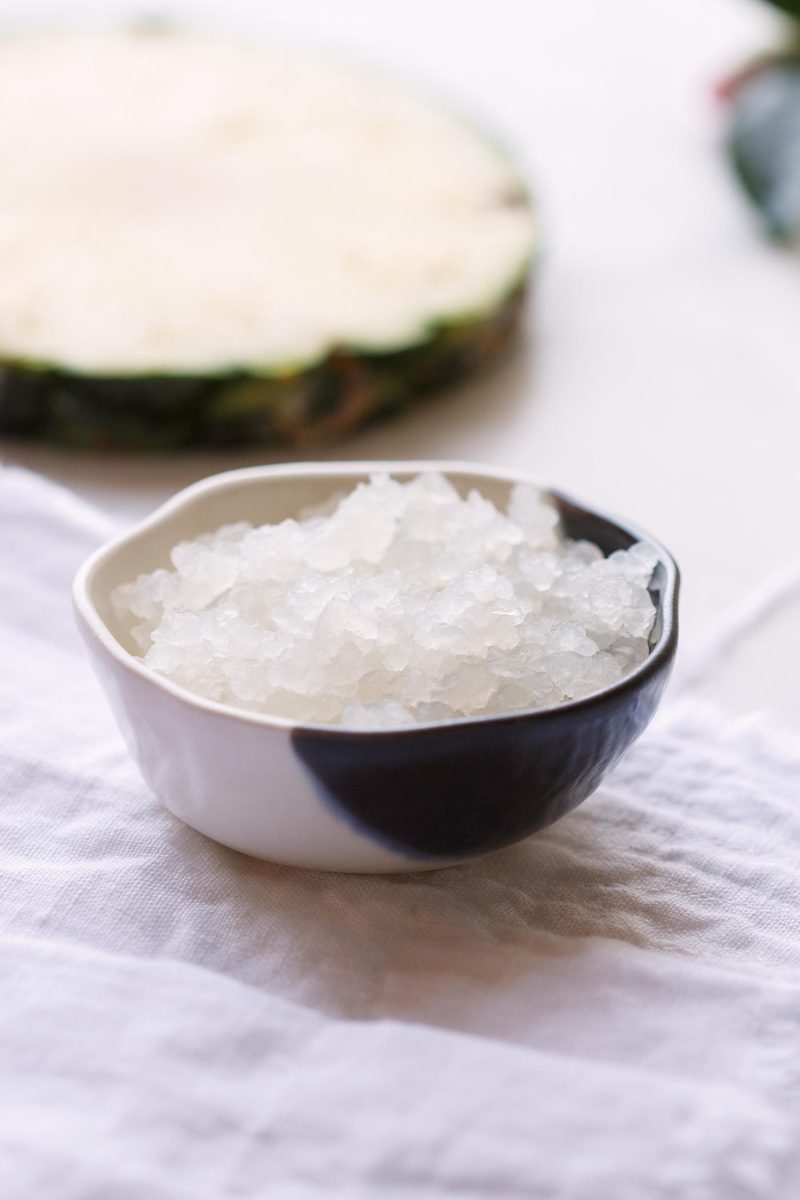
The recipe I am sharing today is using water kefir, not dairy. There is a difference. But first I’ll tell you a little about the origins because it is quite a fascinating story.
Kefir: the background story
According to legend, some 10,000 years ago, nomads and wanderers in the Middle East and Middle Asia would travel long distances, carrying pouches fashioned out of animal skin filled with milk, for nourishment. The low humidity and high temperatures caused the milk to ferment, and, upon drinking it, they were quick to realise the nutritive value. And so, despite not really knowing how or why it worked – kefir as a functional food was born.
What about water kefir?
Well, I’ll admit, it is still a bit of a mystery really.The grains themselves are still cultures of yeasts and lactic-acid bacteria, though I’m uncertain of their origin. Water kefir refers to a dairy free fermented beverage made using sugar water, coconut water or fruit juice rather than milk. Sugar is needed when using water (coconut and fruit contain natural sugars of course) as the grains need something to feed off – whereas in making dairy kefir, they thrive off the natural sugars already present in the milk.
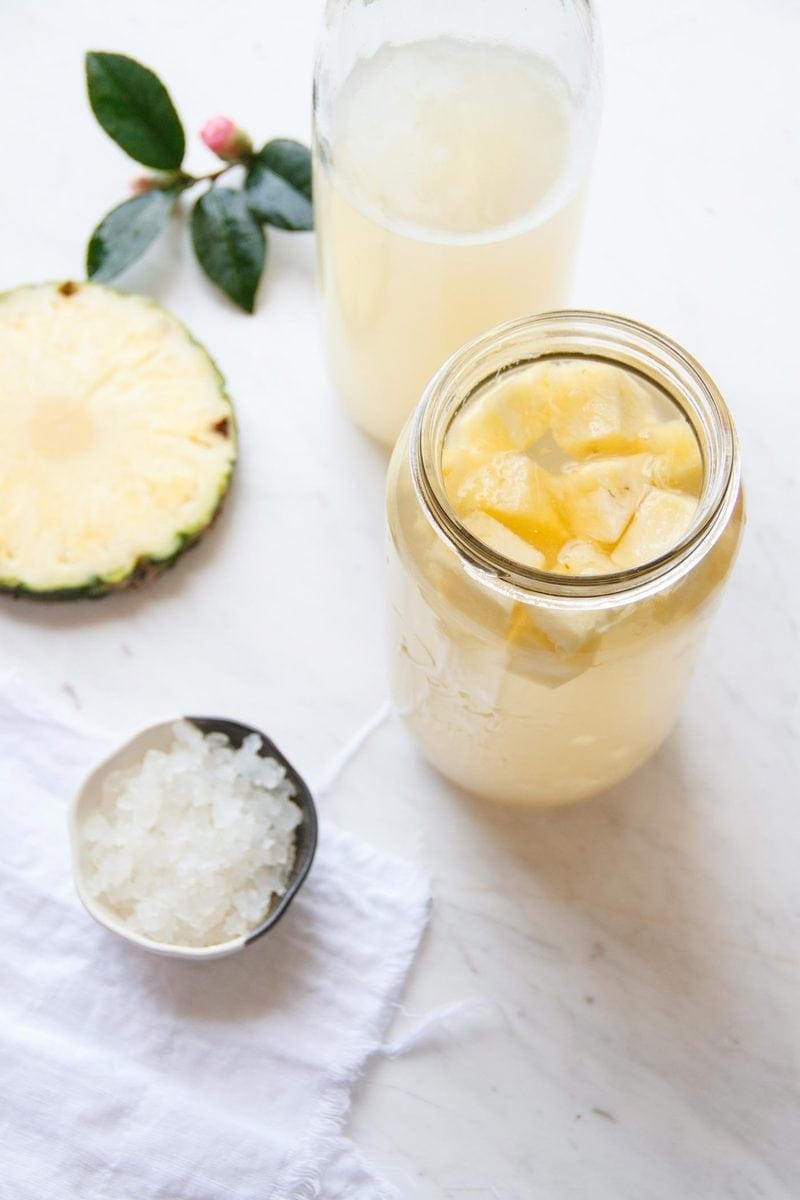
Where to find the grains
You can buy kefir grains at some health food stores or organic supermarkets, though it’s more than likely they will have been cultured in dairy. Water kefir grains are a little harder to source, so your best bet is to have a google and see who will deliver them straight to you. For example, I purchased my initial grains here, and received them a few days later, neatly packaged with ample sugar to keep them fed and happy.
📖Recipe
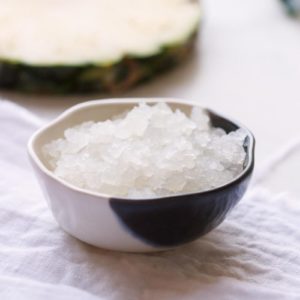
Basic Kefir
Ingredients
- Water kefir grains
- Sugar
- Organic Medjool date
- Water
Instructions
FATTEN YOUR GRAINS UP:
- If this is your first time making kefir, you may need to make a few test batches up before you get something of quality you can drink. First of all – if you’ve bought them online or from a store, and only have a small quantity, you’ll have to feed them and let them grow to the point where you have a good half a cup’s worth – this is the quantity you’ll need to make a one litre batch of kefir. Secondly, as these guys are living microorganisms, they may have been starved a little in transit, so they’ll now need a little love before they get their probiotic mojo back.
- Sterilise a glass jar, pour a small amount of boiling water in the bottom (an inch or so), add a few tablespoons of sugar, top with 500ml cold, filtered water, and add the kefir grains. Cover the mouth of the jar with a paper towel fastened with a rubber band, and let to culture somewhere warm (not in direct sun) for 48 hours (note – the culture time for kefir is far quicker than with kombucha). At this point, you may have noticed the grains have doubled their weight – this is good – repeat the process again, doubling the amount of sugar AND water, and hopefully you’ll notice the water eventually loses its sweet taste and becomes a bit carbonated. The kefir grains apparently do well when fed something with a high mineral content, some suggest adding a few eggshells to the mix, but I prefer to add an organic date – it seems to do the trick nicely.
Tip - don’t let the kefir grains touch anything metal – they don’t like it! Use wooden utensils and plastic sieves.
📖Recipe
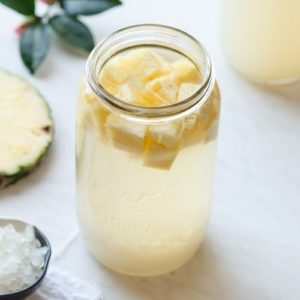
Pineapple Coconut Water Kefir
Ingredients
- ½ cup water kefir grains
- ¼ cup sugar
- Just under 1 litre of coconut water
- 1 organic Medjool date
- ½ cup organic pineapple chopped
Instructions
- Once you have a good half a cup of grains, you can now make up a flavoured coconut water kefir.
- In a one litre jar, dissolve ¼ cup sugar in a few inches of boiling water, then add cold coconut water – leave some room at the top as you’ll need to add the grains and fruit next. Note – the coconut water naturally contains sugar – if you wanted to use filtered water instead, use ½ cup of added sugar.
- After adding the grains, pop in the chopped pineapple and a date, cover with a paper towel and leave to culture 48 hours.
- After 48 hours, you’ll notice the mixture is well and truly carbonated, and the sugar content will have been greatly reduced. It may look a little cloudy, and should taste slightly sweet, slightly sour. Decant the kefir into a glass bottle, taking care to use plastic sieves/funnels. Discard the fruit and date, but keep the kefir grains for your next batch. Store in the fridge for a few days and enjoy.
Notes
KEFIR TIPS:
- You can either compost, throw out or give away any excess kefir.
- The grains themselves can last indefinitely if you care for them – you can keep recycling and feeding them. It’s a good idea to make a batch of plain sugar water + kefir in between coconut/fruit kefir, to keep the grains healthy.
- If you leave your kefir out to culture for too long, you will get a very sour, vinegary end product. Not so nice as a health tonic, but save it for salad dressings.
- Finally – many say that you shouldn’t use honey (in place of regular sugar) – I say, if you want to – go ahead! I’ve had many successful batches with honey.
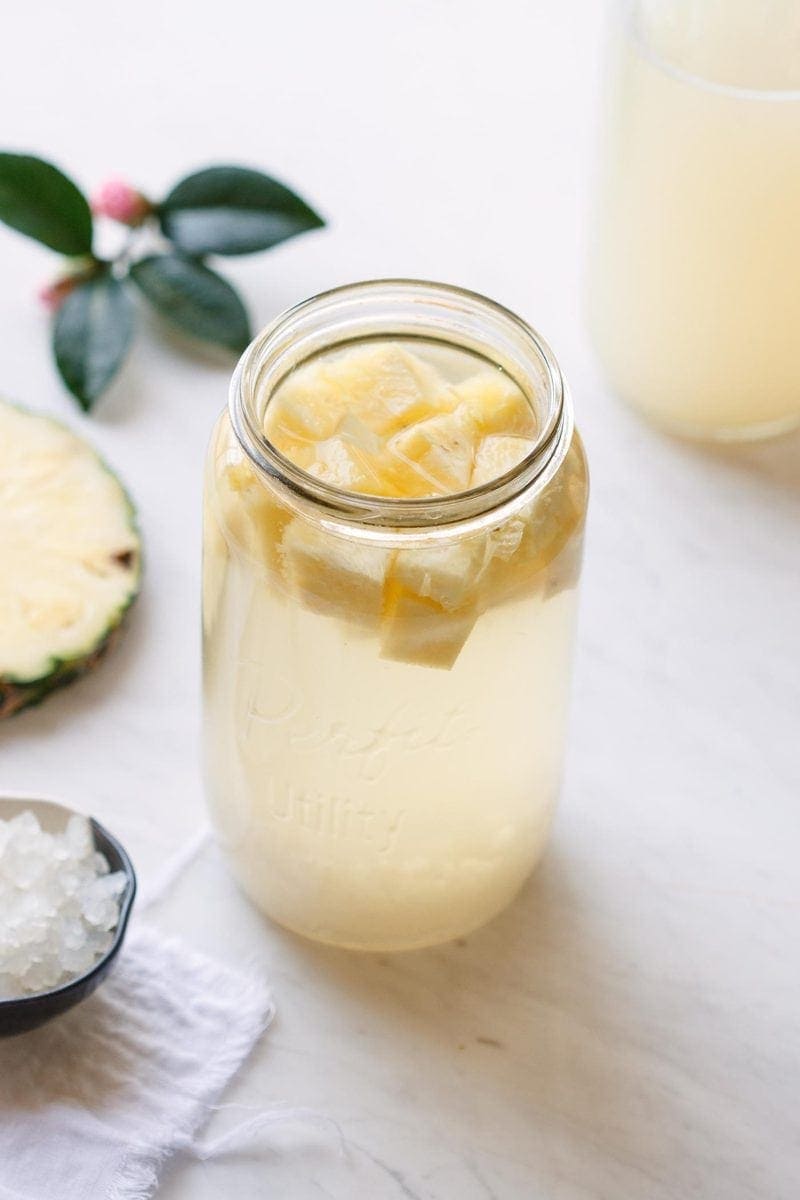
I'd love you to follow me on Instagram,
tag me @ascensionkitchen so I can see your creations!

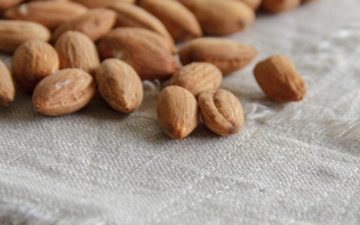
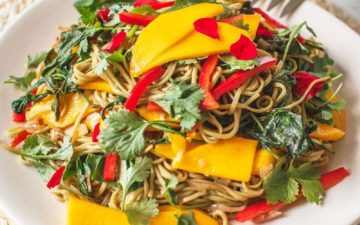
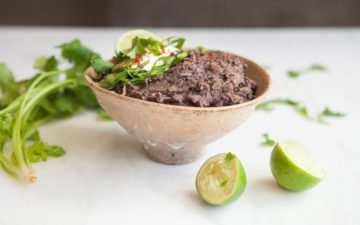
Ask me anything